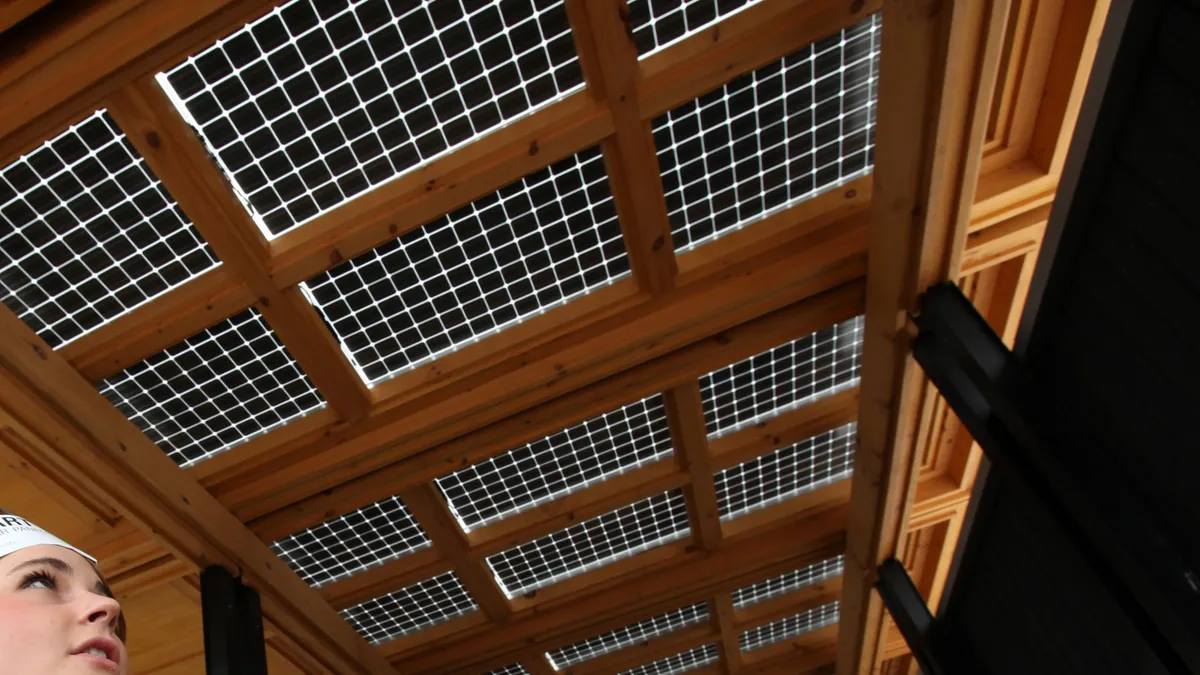Dive Brief:
- The U.S. Trade Representative will withdraw its exclusion of two-sided solar panel imports from the Section 201 tariffs established in 2018, according to a notice published Friday in the Federal Register.
- The Trump administration had created an exemption for the newer, more efficient technology in June 2019, and tried to remove the exemption later that year, but the Court of International Trade blocked that action. The bifacial solar panel exemption will be lifted as early as May 18, according to the notice, while the tariffs will end in 2022.
- Several solar panel manufacturers had rallied behind the need to apply the tariffs to bifacial modules in December, when the U.S. International Trade Commission (ITC) reviewed the effectiveness of the 2018 tariffs, but other members of the solar industry opposed them. The Solar Energy Industries Association (SEIA) is considering opportunities for a legal challenge of the Trade Representative's decision.
Dive Insight:
China's manufacturing and production, and the global solar module market, are starting to recover after the worldwide response to the novel coronavirus, according to SEIA and other solar analysts. Recovering the pace of solar module production is important for projects that have not already purchased and stocked up on panels.
China's quarantine efforts and work stop mandates led industrial production to fall by nearly 14% in the first two months of the year, the National Bureau of Statistics of China said in March.
The module market delays had already spurred solar advocates to call for an extension of tax credits. Now, amid worries of how COVID-19 is impacting global solar supply chains, this notice from the Trade Representative threatens many solar developers, according to SEIA.
"It is unfortunate that [the Trade Representative] chose to pursue a course of action that will needlessly increase the financial burden on America’s energy consumers. We still hope to work with the administration to find constructive ways to grow the U.S. solar manufacturing base and take full advantage of the opportunities the solar industry offers to the American economy's recovery," John Smirnow, SEIA's general counsel and VP of market strategy, said in a statement.
Solar manufacturing in the U.S. has grown to some extent under the 2018 tariffs. While SEIA has questioned the effectiveness of safeguards from cheaper foreign manufacturing, five module manufacturing utilities have opened in the U.S. since 2018.
Two-sided panels are a newer technology and are therefore not produced on a significant scale at U.S. manufacturing facilities, SEIA argued during the ITC's midterm review of the tariffs.
"The [solar] industry initially sought this exclusion because there is, and will be for the foreseeable future, an acute shortage of [monofacial or bifacial] domestic panels used in utility-scale solar projects," Smirnow said.
The ITC reported in March that bifacial modules are projected to grow in popularity, gaining "a large share of total demand in the coming years due to their power-generation advantages and relative cost-competitiveness with monofacial panels," according to the notice, and the tariff exemption is a big component of their price advantage.
"Throughout this process, the solar industry has sought to find a middle ground solution that addressed this shortage in a way that did not undermine the objectives of the underlying Section 201 safeguard measure," Smirnow said.
The Trade Representative tried to withdraw the exclusion in October, but Invenergy Renewables filed a complaint with the U.S. Court of International Trade saying the office had not followed administrative procedure, failing to provide notice and an opportunity for comment. The court issued a preliminary injunction in December, keeping the exclusion in place.
The Trade Representative asked the Court to lift the injunction in January, based on the new docket it opened on bifacial modules. Otherwise, the exemption would last for the length of the tariffs.
President Donald Trump could modify the solar tariffs based on the midterm review the ITC sent him in February, on the tariff's impacts.














